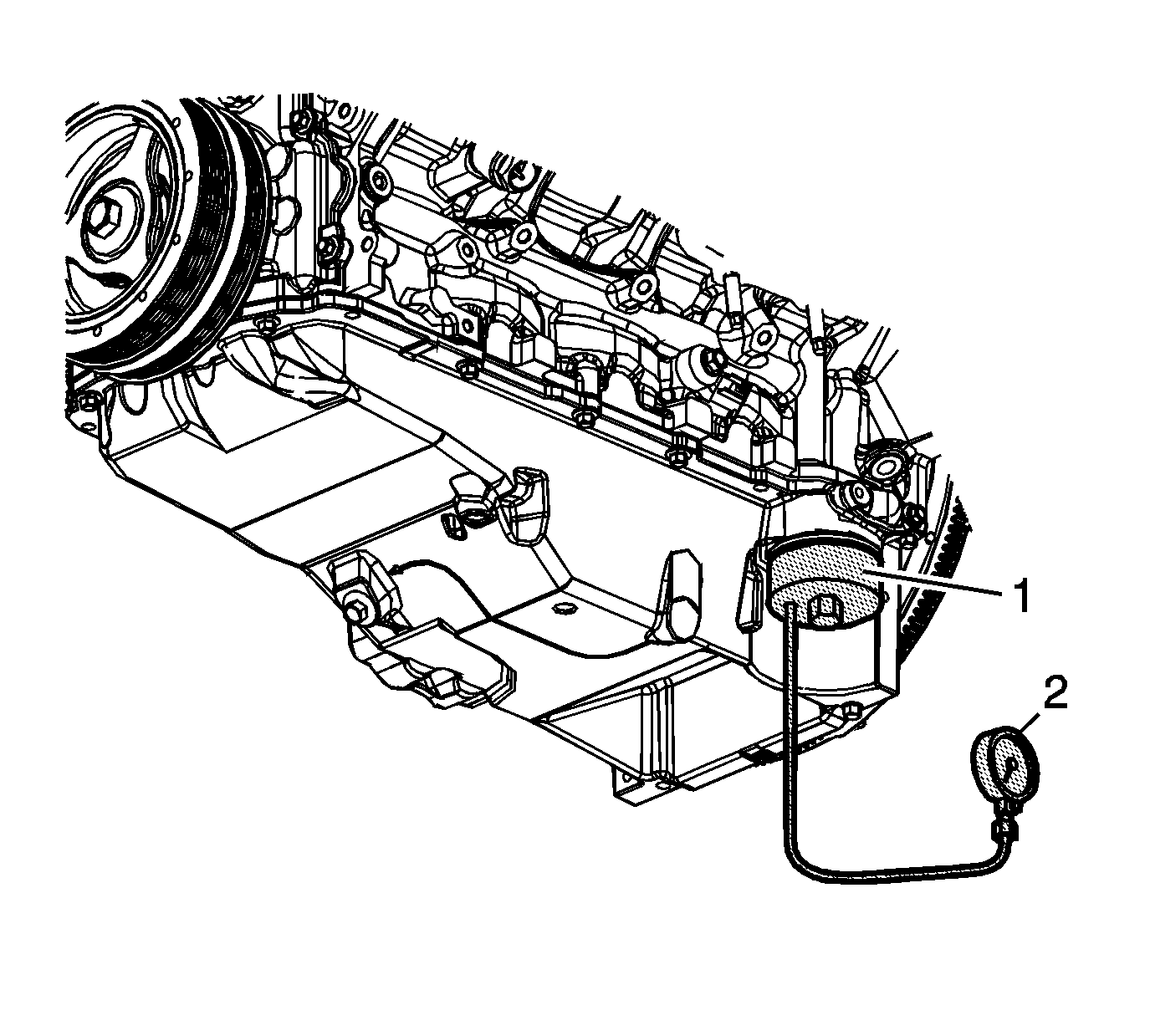Tools Required

- With the vehicle on a level surface, run the vehicle for a few minutes. Allow adequate drain down time, 2-3 minutes,
and measure the oil level.
- If required, add the recommended grade engine oil and fill the oil tank until the oil level measures full on the oil level indicator.
- Run the engine briefly, 10-15 seconds, and verify low or no oil pressure on the vehicle gage or light.
- Listen for a noisy valve train or a knocking noise.
- Inspect for the following conditions:
| • | Oil diluted by water or glycol antifreeze |
- Remove the oil filter and install the
EN-47971
(1).
- Install the
J 21867
(2), or equivalent to the
EN-47971
(1).
- Run the engine and measure the engine oil pressure.
- Compare the readings to
Engine Mechanical Specifications
.
- If the engine oil pressure is below specifications, inspect the engine for 1 or more of the following conditions:
| • | Restricted engine oil tank screen |
| • | Collapsed or restricted oil hoses |
| • | Loose oil hose connections at the oil tank or oil pan |
| • | Damaged oil tank-to-hose or oil pan-to-hose seals |
| • | Oil pump-to-engine block bolts loose or oil pump mis-aligned to the oil pan rail |
| • | Oil pan gasket at oil pump sealing surface damaged |
| • | Malfunctioning oil pump pressure relief valve |
| • | Excessive bearing clearance |
| • | Cracked, porous, or restricted oil galleries |
| • | Oil gallery plugs missing or incorrectly installed |
- If the oil pressure reading on the
J 21867
, or equivalent, is within specifications, inspect for the following conditions:
| • | Plugged or incorrect oil filter |
| • | Malfunctioning vehicle oil pressure gage or engine oil pressure sensor |

